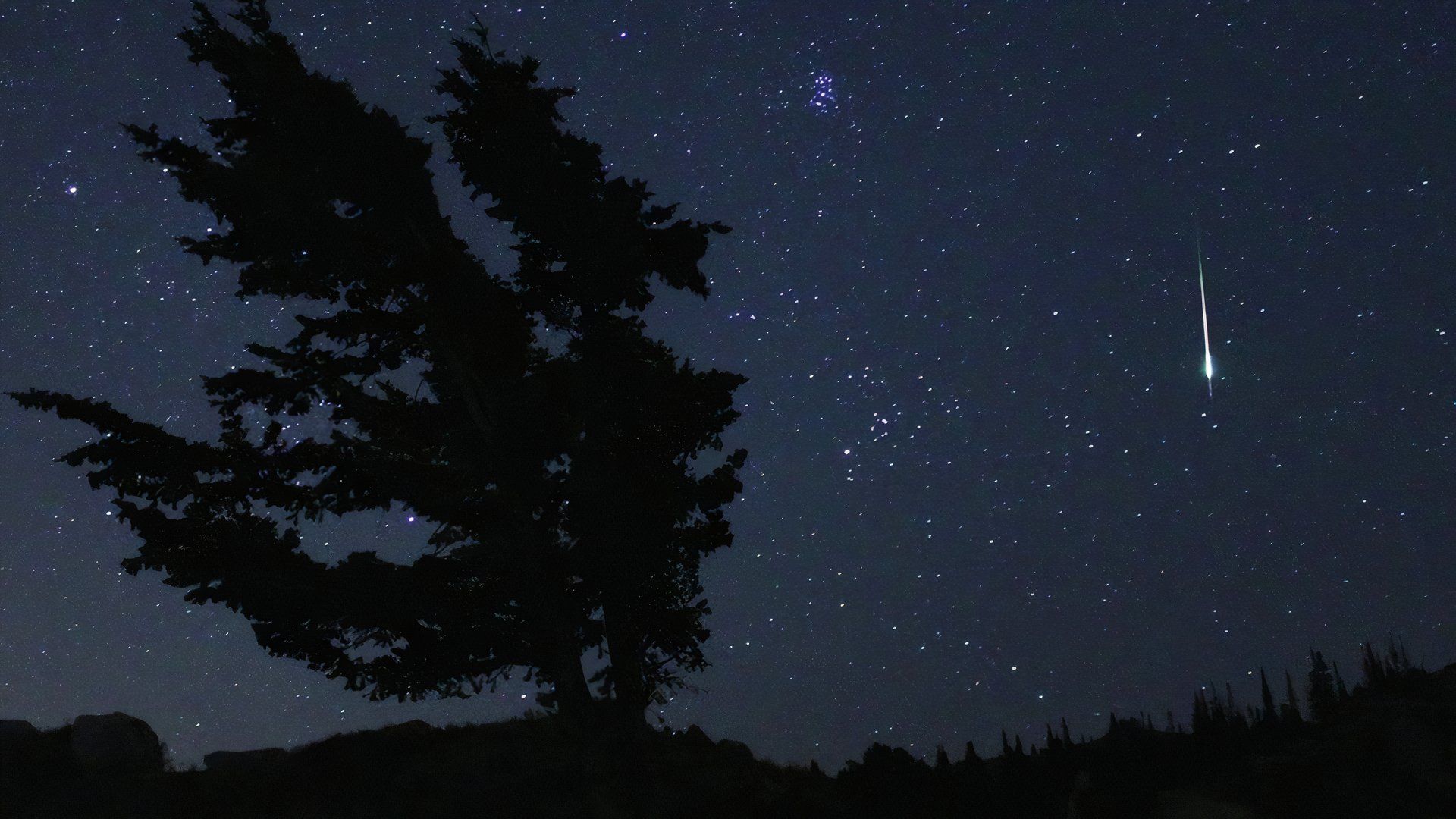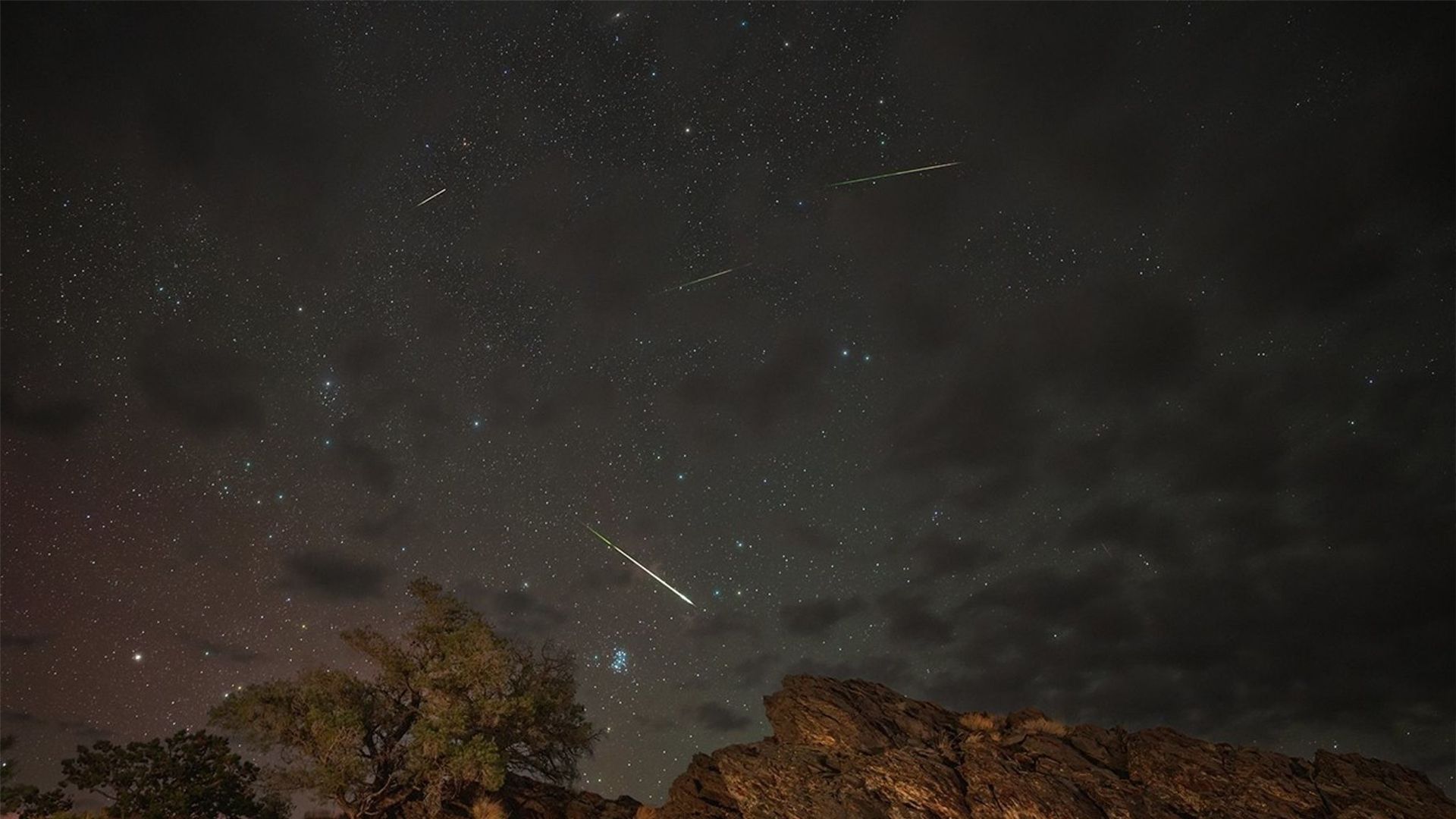As Earth passes through the debris of Halley’s Comet, the sky lights up with shooting stars for more than a month. The Eta Aquariid meteor shower is an extended cosmic spectacle, and it’s calling on you to bear witness to nature’s celestial fireworks.
What Is the Eta Aquariid Meteor Shower?
When our blue planet drifts through the cosmic breadcrumbs left behind by Halley’s Comet, our sky becomes a stargazer’s delight. This annual show is one of two meteor showers linked to one of history’s most famous astronomical objects. While the comet itself won’t return to view until 2061 on its 76-year orbit of the sun, its debris creates this stunning display every year.
The shower’s radiant, the point in the sky where meteors appear to originate, is near the Eta Aquarii star in the Aquarius constellation. However, from the perspective of observers on Earth, the shooting stars’ trajectories appear to be distributed across the entire sky due to their parallel paths through space (think train tracks stretching off into the distance).
As Earth intersects the comet’s debris, particles burn up in our atmosphere and create glittering streaks across the skies. These glowing trains stick around for seconds or even minutes before fading into the darkness of space.
The color of the streaks can tell you a bit about what the meteor is made of. For example, sodium gives off a yellow-orange color, while magnesium is blue-green.
When to See the Eta Aquariid Meteor Shower
Other meteor showers burst briefly across the heavens, but the extended performance of the Eta Aquariids from April 19 to May 28 transforms our atmosphere into a celestial theater. With minimal moonlight interference expected during May 2025, conditions promise to be ideal for witnessing this awe-inspiring interstellar performance.

Meteorites Are Far More Amazing Than You Realize
It’s not really shooting stars; it’s just cosmic debris, speeding into an inferno.
It peaks around May 4, which will particularly please Star Wars fans. The first-quarter moon sets before dawn on that day to deliver ideal viewing conditions. Early birds will be rewarded with the most spectacular views, so set the alarm for a very early rise or keep the coffee hot for a very late night and prepare yourself for one of the year’s best shooting star shows.
Best Locations for Viewing the Eta Aquariid Meteor Shower
Those located in the Southern Hemisphere are in for a treat because the radiant point there is higher in the sky, which results in more meteors, with up to 30 per hour. Under optimal conditions, stargazers in the lower latitudes may even be able to observe up to 50 in one hour.
However, that doesn’t mean viewing in the Northern Hemisphere is pointless. On the contrary, observers can still spot as many as 20 hourly sightings, meaning staying up with that hot flask of coffee is still very much worth it.
How to Prepare for the Eta Aquariid Meteor Shower
For the best Eta Aquariids experience, find a dark location away from city light pollution. Bring a blanket or a reclining lawn chair and lie back with your feet pointing eastward to have the radiant in the best position.
Patience is required when adjusting your eyes to the darkness before the meteors become fully visible. Make sure you’re outside with your eyes adjusted for around 2:00 a.m. local time. You should allow at least 30 minutes before you start seeing them clearly and observe when the radiant is above the horizon.
Sightings will gradually increase until dawn, but it’s unnecessary to focus on the radiant point in Aquarius because the meteors will be blazing across the entire sky.
The Eta Aquariids are fast. In fact, at around 40.7 miles/s (65 km/s), they are some of the fastest meteors and can be difficult to catch. So be patient and appreciate the moments of good sightings. No specialist equipment is required, so simply lie back, relax, and enjoy the spectacle.
The stunning Eta Aquariid meteor show offers stargazers a celestial display every year. Under ideal viewing conditions, it’s an event to be enjoyed with the naked eye. You’ll get to count more if you’re located in the Southern Hemisphere, but it’s still a worthy event for anyone in the North. Just follow the viewing tips and make sure your cosmic observations take place under clear skies and far from light pollution. Also, keep in mind that you don’t need a telescope or binoculars; just bring patience and a sense of wonder.







